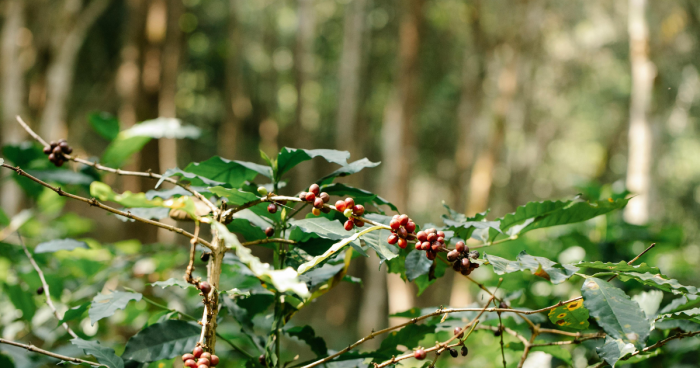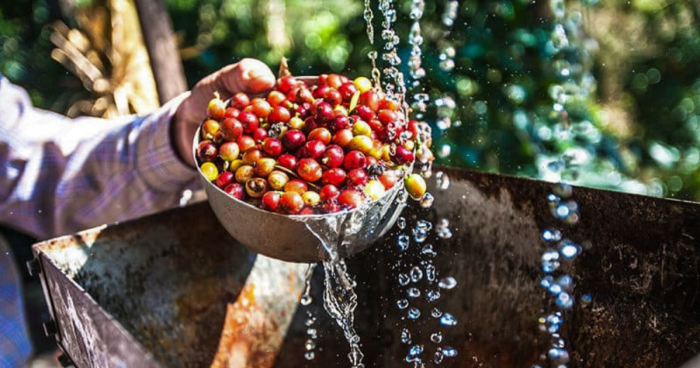At Good Earth Coffeehouse, we believe in more than just serving a great cup of coffee—we’re passionate about sharing the journey of our coffee beans from the farm to your cup. Join us as we trace the fascinating path of our sustainably sourced coffee, celebrating the dedication and craftsmanship of everyone involved in bringing you that perfect sip.

Stage 1: Cultivation on the Farm
Our journey commences in the lush landscapes of coffee-growing regions around the world, from the misty highlands of Ethiopia to the sunny slopes of Colombia. Here, coffee trees thrive in tropical climates, where fertile soil, ample rainfall, and altitude create optimal growing conditions. Farmers carefully tend to their coffee plants, nurturing them through pruning, fertilizing, and pest management to ensure healthy yields.
We partner with growers who embrace environmentally friendly practices, including those certified by the Rainforest Alliance. These farms not only produce exceptional coffee but also protect vital ecosystems and support the well-being of local communities. By supporting sustainable farming methods, we ensure that our coffee not only tastes great but also has a positive impact on the planet.

Stage 2: Harvesting the Cherries
As the coffee cherries ripen, they transition from vibrant green to deep red or bright yellow for some varietals, signaling the readiness for harvest. This labor-intensive process involves handpicking the ripe cherries, a task that requires skill and precision. Most small-scale farmers rely on traditional methods, which allow for selective harvesting and ensure only the ripest cherries are picked.

Stage 3: Processing the Cherries
Once harvested, the coffee cherries undergo a processing process sometimes referred to as mucilage. The purpose of this process to remove the pulp extracting the bean encased within. There are two primary methods of processing: the dry method and the wet method. In the dry method, cherries are spread out to dry in the sun, while in the wet method, they undergo washing to remove the pulp before drying. Each method imparts distinct flavors and characteristics to the beans, contributing to the diversity of coffee profiles available.

Stage 4: Milling and Sorting
After drying, the coffee beans are milled to remove the parchment layer that surrounds them. This step also involves sorting the beans based on size, density, and quality. Meticulous attention to detail is crucial during this stage to ensure consistency and uniformity in the final product. Quality control ensures any defective beans are removed, preserving the integrity of the batch.

Stage 5: Roasting to Perfection
Roasting is where the magic truly happens, as green coffee beans are transformed into aromatic, flavorful gems. Roasters carefully monitor temperature and time to unlock the beans’ full potential, bringing out nuanced flavors and aromas. The roasting process is a delicate balance of science and art, with roasters drawing on their expertise to achieve the desired roast profile.

Stage 6: Brewing and Enjoyment
Finally, the freshly roasted coffee beans make their way into our cafes, ready to be brewed into a delicious cup of coffee. Whether you prefer the simplicity of a brewed coffee, or the richness of an espresso shot, the choice is yours. Each brewing method extracts unique flavors from the beans, allowing you to tailor your coffee experience to suit your preferences.
